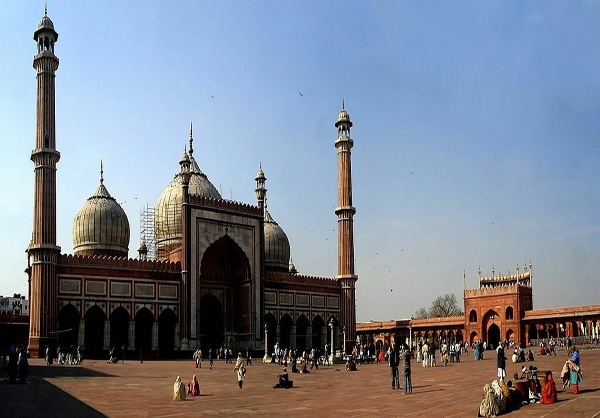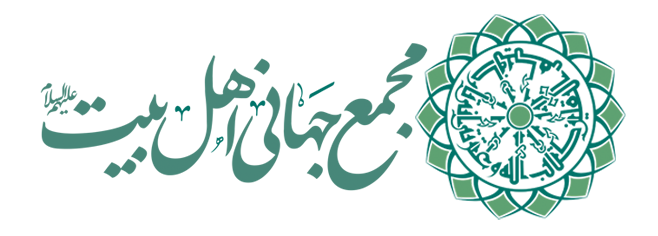Indian Shiites are a minority within a minority/ Financial issue the most important challenge Indian Shiites facing: Syed Sikander Kazem Tagvi
A member of the General Assembly of the AhlulBayt (a.s.) World Assembly from India stated, “More than 70% of people in India are Hindus, and Muslims are a minority in the country. Therefore, in general, the Muslims of India are facing challenges. When Muslims are a minority in the country, the Shiites of India are considered a minority within a minority.”
ABWA Official Website – With an area of 3.3 million m2, India is the seventh largest country in the world and with a population of 1,422,000,000, it is the first most populous country. From the west and northwest (through Kashmir), India borders Pakistan, from the north with China, Bhutan, Nepal, and Tibet, and from the East with Myanmar and Bangladesh. The southern half of India is bounded by the waters of the Bay of Bengal, the Arabian Sea, and the Indian Ocean.
India is the birthplace of Buddhism, Hinduism, and Sikhism. A large part of the followers of these religions live in India along with Muslims, Christians, and Zoroastrians. 80.5% of the population of the country are Hindus, while 13.4% are Muslims. Christians, Sikhs, Buddhists, and followers of the Jainism religion are among the other religious groups living in India.
According to some traditions, Islam entered India during the lifetime of the Prophet Muhammad (p.b.u.h). The first steps in the introduction of Islam to India were taken by Muslim merchants. India’s trade relations, especially in the south of the country and through the sea, were high with Muslim countries, and the voyages of Muslim merchants is one of the first ways that Islam was introduced to the people of the southern and interior regions of India. Over time, some cities and ports of this country became Muslim settlements.
Shia has a long history in some parts of the Indian subcontinent. In addition to the presence of Shiite communities, in different historical periods, Shiite governments were also established in these regions. The emergence of Shia in the Indian subcontinent dates back to the arrival of Muslims in the region during the reign of Imam Ali (a.s.).
There is no accurate information about the Shiite population in India. Various sources estimate India’s Shiite population to be between 30 and 50 million people, and some consider India’s Shiite population to be the largest Shiite population in the world after Iran. Although Shiite communities live in areas such as the Deccan or Faizabad, which formerly had Shiite rulers, the distribution of Shiites in India has changed in the contemporary era. Now, the main centers of Shiites are the cities of Punjab, Delhi, Hyderabad, Amroha, Faizabad, Jaunpur, Lucknow, Rampur, and Kashmir.
On the sidelines of the 7th General Assembly of the AhlulBayt (a.s.) World Assembly, Ali Ansarshahri, reporter of ABNA News Agency has conducted a brief interview with Syed Sikander Kazem Tagvi, a Shiite activist from India, as follows:

ABNA – First of all, please introduce yourself and briefly explain your activities.
Syed Sikander Kazem Tagvi – I’m Syed Sikander Kazem Tagvi from India, and I am currently studying for a Ph.D. in family jurisprudence. In addition to studying, I am active in propagational and cultural affairs, and in addition to research and media activities in an institution, I also teach. Our activities are in Urdu, English, and Hindi languages and are mainly for Indian Shiites.
ABNA – Please explain the history of Islam and Shia in India.
Syed Sikander Kazem Tagvi – Islam in India has a long history and Muslims have been in the country since the early centuries of Islam. Muslim communication with India has been mostly through trade and scientific interactions. The Shiite school entered India centuries ago, and the Shiite population in the country is estimated to be between 45 and 70 million people.
The cities of Hyderabad and Lucknow are the two main Shiite cities in India. Of course, there are significant populations of Shiites in the cities of Delhi and Mumbai. In India, one can see all Shiite cultures and beliefs. There are many differences in this country, and you can find different types of cultures and see Shiite and religious cultures well there.
ABNA – What challenges are the Shiites of India facing?
Syed Sikander Kazem Tagvi – More than 70% of people in India are Hindus, and Muslims are a minority in the country. Therefore, in general, the Muslims of India are facing challenges. When Muslims are a minority in the country, the Shiites of India are considered a minority within a minority. The country’s Shiites are facing various challenges, the most important of which are economic, educational, and the level of literacy of the people. Some believe that these challenges are caused by political actions.
Due to the general planning of the government, the Shiites of India are in a state of stagnation. While the followers of Sikhism have made great progress, the Muslims of India do not enjoy that level of development. Compared to the Jews and Christians of the country, the Muslims of India are not in good condition. Therefore, according to this situation, it is natural that the Shiites also do not enjoy suitable conditions.
ABNA – Please Explain your media activities.
Syed Sikander Kazem Tagvi – Today, media has a very important role in different countries. The media can show falsehood as truth and truth as falsehood. Today we live in a world where life goes online, and we deal a lot with social media, and many media activities are against Islamic principles and ideals. So that children can easily access Haram music, inappropriate games, and obscene videos online.
In order for children and adolescents to have the right to choose between the two sides of right and wrong in the virtual space, appropriate content must be offered in this space. Therefore, we established an institution for media activities. In this institution, media content for children and adolescents was prepared first, which was the result of various research and studies. But then we turn to answer the doubts of the young generation, especially the ideological doubts, and this is crucial for us. Therefore, now, we do not answer children’s doubts directly.
Through the production of animation, cartoons, and films for three groups of children, adolescents, and young people we tried to solve the problems caused by others for them, and to achieve this goal, we have so far produced more than 50 animation products. In our works, instead of translating others’ works, we looked for localization, and we produce the work completely, from A to Z, using local forces. In other words, from drawing on paper to animating that drawing, making scenes, editing animation, and making it 3D, etc., it is our own product.
Some works may not be produced as we wanted at first. But when we start something from scratch, progress is always available. For instance, we had started a project for the Urdu language, but it was finally translated into the Swahili language.
ABNA – Thank you. God willing, while continuing these activities will expand.
Syed Sikander Kazem Tagvi – Thank you.
/345/
A member of the General Assembly of the AhlulBayt (a.s.) World Assembly from India stated, “More than 70% of people in India are Hindus, and Muslims are a minority in the country. Therefore, in general, the Muslims of India are facing challenges. When Muslims are a minority in the country, the Shiites of India are considered a minority within a minority.”
ABWA Official Website – With an area of 3.3 million m2, India is the seventh largest country in the world and with a population of 1,422,000,000, it is the first most populous country. From the west and northwest (through Kashmir), India borders Pakistan, from the north with China, Bhutan, Nepal, and Tibet, and from the East with Myanmar and Bangladesh. The southern half of India is bounded by the waters of the Bay of Bengal, the Arabian Sea, and the Indian Ocean.
India is the birthplace of Buddhism, Hinduism, and Sikhism. A large part of the followers of these religions live in India along with Muslims, Christians, and Zoroastrians. 80.5% of the population of the country are Hindus, while 13.4% are Muslims. Christians, Sikhs, Buddhists, and followers of the Jainism religion are among the other religious groups living in India.
According to some traditions, Islam entered India during the lifetime of the Prophet Muhammad (p.b.u.h). The first steps in the introduction of Islam to India were taken by Muslim merchants. India’s trade relations, especially in the south of the country and through the sea, were high with Muslim countries, and the voyages of Muslim merchants is one of the first ways that Islam was introduced to the people of the southern and interior regions of India. Over time, some cities and ports of this country became Muslim settlements.
Shia has a long history in some parts of the Indian subcontinent. In addition to the presence of Shiite communities, in different historical periods, Shiite governments were also established in these regions. The emergence of Shia in the Indian subcontinent dates back to the arrival of Muslims in the region during the reign of Imam Ali (a.s.).
There is no accurate information about the Shiite population in India. Various sources estimate India’s Shiite population to be between 30 and 50 million people, and some consider India’s Shiite population to be the largest Shiite population in the world after Iran. Although Shiite communities live in areas such as the Deccan or Faizabad, which formerly had Shiite rulers, the distribution of Shiites in India has changed in the contemporary era. Now, the main centers of Shiites are the cities of Punjab, Delhi, Hyderabad, Amroha, Faizabad, Jaunpur, Lucknow, Rampur, and Kashmir.
On the sidelines of the 7th General Assembly of the AhlulBayt (a.s.) World Assembly, Ali Ansarshahri, reporter of ABNA News Agency has conducted a brief interview with Syed Sikander Kazem Tagvi, a Shiite activist from India, as follows:

ABNA – First of all, please introduce yourself and briefly explain your activities.
Syed Sikander Kazem Tagvi – I’m Syed Sikander Kazem Tagvi from India, and I am currently studying for a Ph.D. in family jurisprudence. In addition to studying, I am active in propagational and cultural affairs, and in addition to research and media activities in an institution, I also teach. Our activities are in Urdu, English, and Hindi languages and are mainly for Indian Shiites.
ABNA – Please explain the history of Islam and Shia in India.
Syed Sikander Kazem Tagvi – Islam in India has a long history and Muslims have been in the country since the early centuries of Islam. Muslim communication with India has been mostly through trade and scientific interactions. The Shiite school entered India centuries ago, and the Shiite population in the country is estimated to be between 45 and 70 million people.
The cities of Hyderabad and Lucknow are the two main Shiite cities in India. Of course, there are significant populations of Shiites in the cities of Delhi and Mumbai. In India, one can see all Shiite cultures and beliefs. There are many differences in this country, and you can find different types of cultures and see Shiite and religious cultures well there.
ABNA – What challenges are the Shiites of India facing?
Syed Sikander Kazem Tagvi – More than 70% of people in India are Hindus, and Muslims are a minority in the country. Therefore, in general, the Muslims of India are facing challenges. When Muslims are a minority in the country, the Shiites of India are considered a minority within a minority. The country’s Shiites are facing various challenges, the most important of which are economic, educational, and the level of literacy of the people. Some believe that these challenges are caused by political actions.
Due to the general planning of the government, the Shiites of India are in a state of stagnation. While the followers of Sikhism have made great progress, the Muslims of India do not enjoy that level of development. Compared to the Jews and Christians of the country, the Muslims of India are not in good condition. Therefore, according to this situation, it is natural that the Shiites also do not enjoy suitable conditions.
ABNA – Please Explain your media activities.
Syed Sikander Kazem Tagvi – Today, media has a very important role in different countries. The media can show falsehood as truth and truth as falsehood. Today we live in a world where life goes online, and we deal a lot with social media, and many media activities are against Islamic principles and ideals. So that children can easily access Haram music, inappropriate games, and obscene videos online.
In order for children and adolescents to have the right to choose between the two sides of right and wrong in the virtual space, appropriate content must be offered in this space. Therefore, we established an institution for media activities. In this institution, media content for children and adolescents was prepared first, which was the result of various research and studies. But then we turn to answer the doubts of the young generation, especially the ideological doubts, and this is crucial for us. Therefore, now, we do not answer children’s doubts directly.
Through the production of animation, cartoons, and films for three groups of children, adolescents, and young people we tried to solve the problems caused by others for them, and to achieve this goal, we have so far produced more than 50 animation products. In our works, instead of translating others’ works, we looked for localization, and we produce the work completely, from A to Z, using local forces. In other words, from drawing on paper to animating that drawing, making scenes, editing animation, and making it 3D, etc., it is our own product.
Some works may not be produced as we wanted at first. But when we start something from scratch, progress is always available. For instance, we had started a project for the Urdu language, but it was finally translated into the Swahili language.
ABNA – Thank you. God willing, while continuing these activities will expand.
Syed Sikander Kazem Tagvi – Thank you.
/345/





